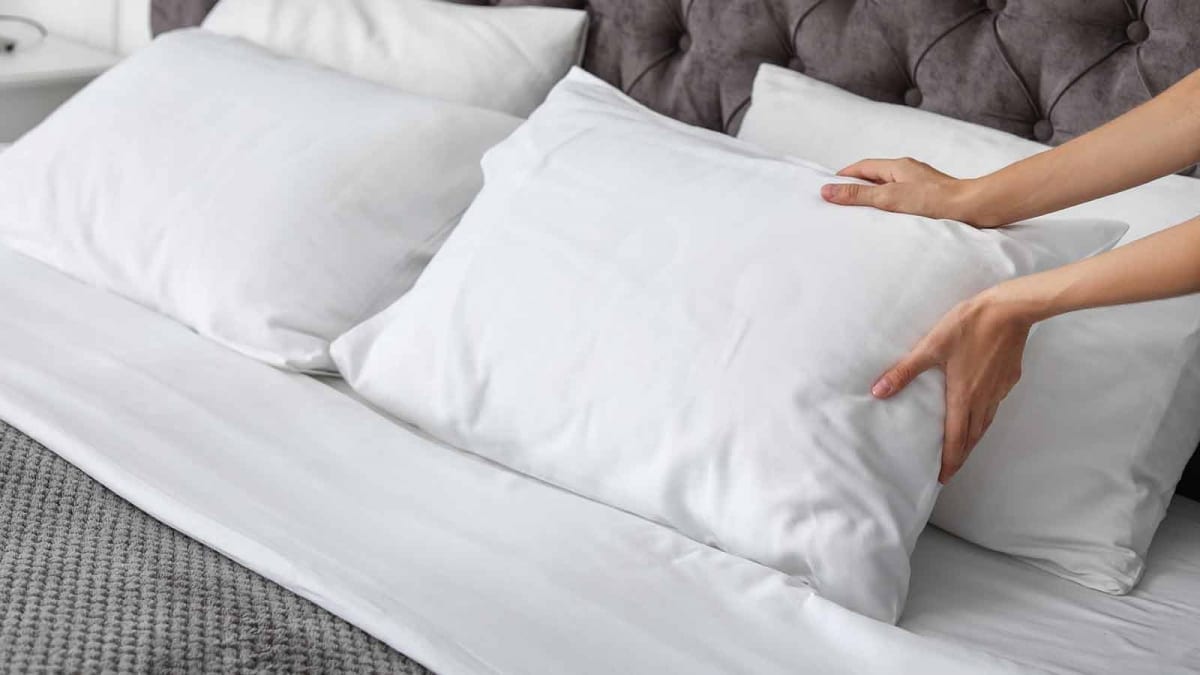Why will washing your pillow save your skin? Even though you cover your pillow with a clean pillow case, it needs occasional washing to prevent the bad guys, such as dust mites, allergens, dust, dirt and mildew from working their way up to you. With your head and face pressed against a pillow, you are putting your face in something that can make you sick. It may take a bit of planning to do it, but washing a pillow brings healthier results. Just follow a few steps.
If you have a feather pillow, it can still be washed, so don’t avoid a future with a clean, feathery, soft place to rest your head.
Here’s how to do it. These are the steps you need to take to get the clean pillow you’ll love:
- Read the label sewn in
- Grab your supplies
- Take all linens and pillowcases off
- Set the pillows to air out
- Use the washer or wash by hand
- Gently dry
1. Read the Label
Your pillow might have special directions; read the label to find out.
2. Get Your Supplies Together
Laundry detergent that is gentle, dryer balls and warm water will be needed. If there are stains, you might add baking soda or vinegar. Do not use bleach, as it is too harsh.
3. Take Pillowcases and Linens Off the Bed
You can wash them separately to prepare for a clean pillow.
4. Air Out the Pillows
Put out in the sun if possible, for a few hours. You can also put it in the dryer without the heat. Memory foam pillows and those made of latex will not do well in heat, so be careful during this step.
5. Wash in the washer or hand wash
Some pillows need to be washed by hand while others can go in the machine. Down and microfiber pillows can be thrown in the washing machine, as long as there are no tears or rips. Balance the machine by adding two pillows at the same time. Never use hot water; always warm water for your pillows. A detergent is powder form, rather than a liquid, will keep the pillows from being sticky.
Load the pillows vertically if using a top loading machine to avoid agitator wrap-around. Use a gentle cycle and rinse with cooler water.
Pillows made of polyester can be laundered in warm water; use the cycle that will provide gentle cleaning.
Having the right washer and dryer will help you to keep your laundry clean and fresh.
6. Gently Dry
Pillows should be thoroughly dry before use. This is to prevent the growth of mold or mildew. Use dryer to tumble dry, fluffing occasionally to prevent clumping. Many pillows take about an hour on moderate heat settings. Dryer balls can be added or even tennis balls to speed up the drying.
Drying down and feather pillows requires a no-heat setting with air-dry. It may take longer, so be prepared to wait.
Whether you are a side sleeper or a back sleeper, a clean mattress and clean pillow add to a great night’s sleep. So save your skin and get a better nights rest with a fresh pillow.








